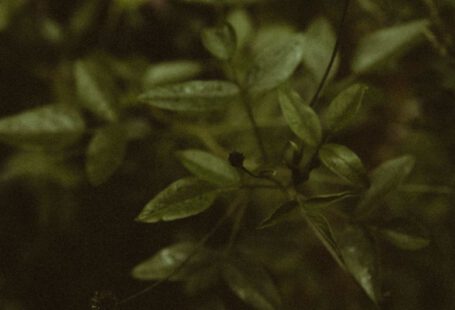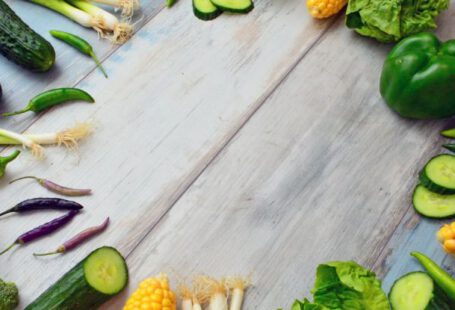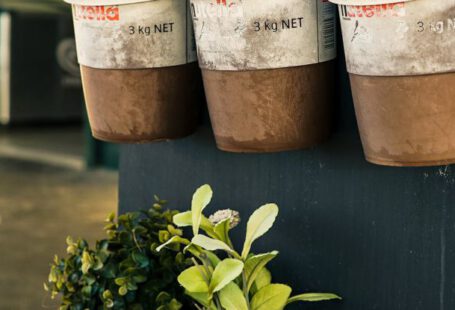In today’s world where sustainability and environmental consciousness are becoming increasingly important, the concept of edible landscaping has gained significant traction. Edible landscaping involves incorporating edible plants into traditional landscaping designs, blurring the lines between ornamental and practical gardening. This trend not only adds beauty and interest to outdoor spaces but also serves a functional purpose by providing fresh, homegrown produce. The question that arises is whether edible landscaping can strike a balance between aesthetics and practicality. Can it truly be both beautiful and useful? Let’s delve into the realm of edible landscaping to explore its potential as a harmonious fusion of beauty and utility.
The Art of Edible Landscaping
Edible landscaping is a creative approach to gardening that transforms traditional lawns and gardens into productive, multifunctional spaces. By integrating fruit-bearing trees, shrubs, herbs, and vegetables into the landscape design, homeowners can enjoy a bountiful harvest while enhancing the visual appeal of their outdoor environment. Imagine a backyard filled with vibrant cherry tomatoes, fragrant herbs, and colorful peppers interspersed among flowering perennials and ornamental grasses. Edible landscaping blurs the boundaries between the decorative and the practical, inviting us to rethink the way we use our outdoor spaces.
Balancing Beauty and Functionality
One of the primary concerns when it comes to edible landscaping is whether it can maintain both beauty and functionality. Some may worry that a garden filled with edible plants might lack the aesthetic appeal of a traditional ornamental garden. However, with careful planning and design, it is entirely possible to create a visually stunning landscape that also produces an abundance of fresh, organic food. The key lies in combining edible and ornamental plants in a harmonious way, paying attention to color, texture, and form to create a cohesive and attractive overall look.
Creating a Feast for the Senses
Edible landscaping has the potential to engage all of our senses, making it a truly immersive and rewarding gardening experience. Picture walking through a garden filled with the scent of blooming herbs, the sound of bees buzzing around pollinator-friendly flowers, and the taste of ripe berries picked straight from the vine. Edible landscaping invites us to interact with our outdoor spaces in a whole new way, encouraging us to touch, smell, taste, and enjoy the natural world around us. By incorporating a diverse array of edible plants, we can create a sensory feast that delights and nourishes both body and soul.
Sustainability and Self-Sufficiency
Beyond its aesthetic and sensory appeal, edible landscaping offers practical benefits that extend far beyond the boundaries of our gardens. In a world where food security and sustainability are major concerns, growing our own food can empower us to take control of our food supply and reduce our environmental impact. By cultivating edible plants in our landscapes, we can minimize the need for chemical inputs, reduce food miles, and promote biodiversity in our local ecosystems. Edible landscaping is not just about creating a beautiful garden—it is about fostering a deeper connection to the land and embracing a more sustainable way of living.
Harvesting the Rewards
One of the most satisfying aspects of edible landscaping is the opportunity to harvest and enjoy the fruits of our labor. Whether it’s plucking a ripe apple from a tree, harvesting fresh greens for a salad, or picking herbs for seasoning a meal, there is a special joy that comes from eating food that we have grown ourselves. The act of harvesting and consuming homegrown produce can deepen our appreciation for the natural world and foster a sense of gratitude for the abundance that surrounds us. Edible landscaping not only nourishes our bodies but also feeds our souls, providing a tangible connection to the earth and the cycles of life.
In Conclusion: A Feast for the Eyes and the Palate
Edible landscaping has the potential to be both beautiful and practical, offering a harmonious blend of aesthetic appeal and functionality. By combining ornamental and edible plants in creative and thoughtful ways, we can create outdoor spaces that delight the senses and provide a sustainable source of fresh, healthy food. Embracing the art of edible landscaping allows us to cultivate a deeper connection to the natural world, promote biodiversity, and foster a sense of self-sufficiency. So, the next time you’re planning your garden, consider adding a touch of edibles to create a landscape that is not only visually stunning but also deliciously rewarding.





